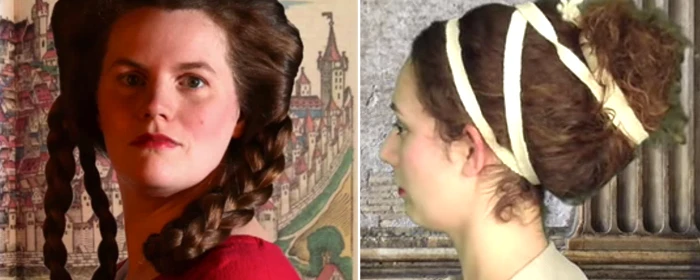Hairstyle fashion in Rome was ever-changing, and there were many different ways to style hair, especially during the Roman Imperial Period. As with clothing, certain hairstyles were restricted to certain people in ancient society. Styles are so distinct that scholars can now create a chronology of Roman portraiture and art; we can date images of empresses on coins or identify busts based on their hairstyles. But did you know a hairstylist corrected historians about Greek and Roman hairstyles?
Meet Janet Stephens, a hairstylist who has become a hairstyle archeologist. In 2001, she went to a museum and realized historians were wrong about the hairstyles on Greek and Roman statues being wigs. She recreated the styles and published the results in The Journal of Roman Archaeology.
The Love for Ancient Hairstyles
She became interested in ancient hairdressing styles after visiting the Walters Art Museum in Baltimore in 2001 and seeing some statues from the Greek and Roman collections, including busts that could be viewed in the round from all directions.
I had never seen the back of a Roman statue before. They are usually placed high on shelves or pedestals with the backs tight up against a wall. As I circled the portraits, I saw the logic of the hairstyles and was determined to try some at home.
Janet Stephens, Hair Archeologist
During her research, she discovered that scholars primarily believed that elaborate ancient hairstyles depicted in artworks of the time were wigs. Stephens, believing otherwise based on her observations, set out to conduct her own research.
While researching translations of Roman literature in 2005, she discovered that the Latin term acus, which has several meanings, including single-prong hairpin or needle and thread, was being consistently mistranslated as a single-prong hairpin in the context of ancient Roman hairdressing.
While single-prong hairpins could not have held up the elaborate hairstyles of ancient Rome, a needle and thread could have.
Stephens published her theory in the Journal of Roman Archaeology, Vol. 1, 2008, as Ancient Roman Hairdressing: On Hair Pins and Needles. In 2012, her video Julia Domna: Forensic Hairdressing was shown at the Archaeological Institute of America’s annual meeting in Philadelphia.
She was the first to recreate the hairstyle of the Roman vestal virgins on a modern person in 2013. She has created many videos demonstrating how these hairstyles can be created using tools and materials available in ancient times. The videos are available on the internet. (Source: Rutgers)
The Course of Janet Stephen’s Career
Stephens began her career as a hairdresser, which she continues to do at her Baltimore salon, Studio 921 Salon and Day Spa. She has written articles on her research, given lectures, and created videos demonstrating the techniques she developed to recreate the ancient and historical hairstyles depicted in contemporary artwork since developing her interest in ancient and historical hairstyles.
Her obsession with historical accuracy has paid off. Her research on handsewn hairstyles was published in the Journal of Roman Archaeology in 2008.
In trying to recreate my first ancient styles, I realized that wire bobby and hairpins didn’t exist in antiquity so, being a needlewoman, I tried sewing it together with needle and thread. It worked; the rest was a long search for evidence that sewing hairstyles was practiced in Roman antiquity.
Janet Stephens, Hair Archeologist
(Source: Rutgers)
Image from Vice
